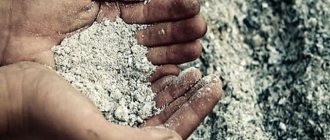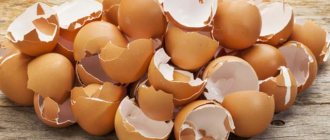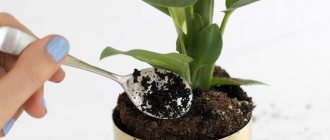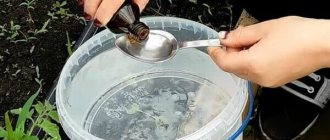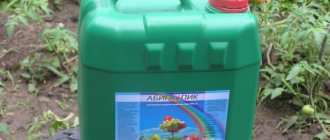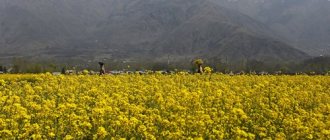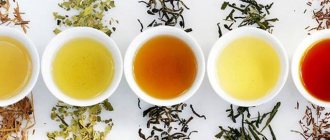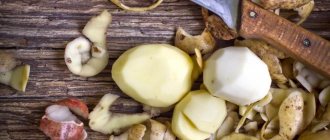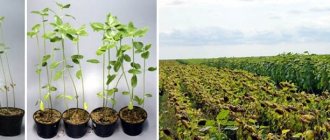Charcoal has been used as fertilizer for many years. It is considered one of the most ecological fertilizers for ship crops. By applying it in practice, you can get a good harvest. Plants and shrubs receive several times more nutrients, thanks to the unique ability of charcoal to saturate the soil. To get the maximum benefit from feeding, you need to know how to use it correctly.
Tips for fertilizing the soil with charcoal
As mentioned above, black, brown and gray charcoal alkalize the soil.
Therefore, you need to be careful when using this supplement. Some types of plantings (cranberries, blueberries) require neutral or acidic soil, and coal can slow down their development and reduce productivity. To improve the quality characteristics of the soil, ash or coal particles can be combined with rotted manure, peat or compost. It is strictly forbidden to mix coal fertilizer with bird droppings or fresh manure. The reason is the high nitrogen content, which, when converted into ammonia, can burn garden plantings. In addition, the phosphorus present in fresh feces is not absorbed by garden plants.
Scientists have proven that when charcoal is added to the soil in combination with mineral additives, the yield of garden and other crops increases several times in comparison with summer cottages where only mineral fertilizers were used.
The absorbing properties of activated carbon can be successfully used in a summer cottage. By feeding plants with this substance, you will simultaneously solve several problems:
- reduce soil acidity;
- reduce the amount of heavy metals and hazardous chemical compounds in the soil;
- feed the plants: the starch contained in activated carbon will appeal to almost all crops. But for greater efficiency, it is still better to use potato peelings.
You can add tablets or coal powder to water for irrigation. It is also effective to dig the tablets directly into the soil. When dry, they will absorb excess moisture and reduce the likelihood of root rotting. This is especially important for seedlings recently planted in open ground. There is no need to add too much coal so as not to change the quality of the soil.
Types of coal
There are several types of coal that are more or less suitable for preventing nutritional deficiencies:
- Woody or brown - formed from peat deposits. It contains more than 40% moisture, so it is most suitable for fertilizing the soil. The depth of occurrence is about 1 km, so it was not exposed to ultra-high temperatures and crumbles easily.
- Hard coal – deposits are located at a depth of about 3 km. Plant remains are dark, almost black in color. The water content inside is about 4%. The layers were formed at high temperatures, so they have a denser consistency.
- Anthracite is the most valuable type of coal, which can be mined at a depth of up to 6 km. Under the influence of high pressure and temperatures without exposure to oxygen, the coal masses were compacted into very dense layers, which can only be broken with special tools.
Coal ash is used very rarely to fertilize the soil. Many people don’t even know about this possibility because they don’t heat their homes with coal.
One type of organic deposit is the mineral leonardite. These are layers that cannot yet be called coal, since they contain more water and organic matter.
They cannot be called fuel, since they burn weakly. In fact, leonardite is a soft brown coal, the initial stage of its formation, although its age is estimated at millions of years.
The main value of such a coal-like substance is its high content of humic acids. It is mined and used to produce humic fertilizers.
Charcoal: how to obtain fertilizer
Charcoal is the remains of wood obtained after the combustion of raw materials with minimal access to oxygen.
At home it is done like this:
- Wood is poured into an iron barrel.
- The raw materials are set on fire and wait until the fire burns out completely.
- The remaining blackened pieces are removed from the container and used for their intended purpose.
This product has a number of positive qualities. It is capable of:
- can be stored for a long time without entering into chemical reactions or decomposing;
- absorb a large amount of liquid and aluminum oxides (is a good absorbent);
- convert nitrogen contained in the air into forms available for absorption by plants;
- regulate soil moisture due to water absorbed during rains;
- activate the biosphere of the top layer of soil.
Due to its porous structure, coal fertilizer:
- has low weight;
- capable of feeding large areas with a minimum amount.
In agriculture, ash from burnt coal is used as fertilizer:
- stone;
- woody;
- brown.
Coal is not used as a fertilizer; the ash remaining after its combustion is suitable for this purpose. Slag and ash contain calcium necessary for active plant growth.
Almost half of coal ash consists of silicon oxides. It is used as a loosening agent for heavy clay soil. Coal ash as a fertilizer helps increase productivity, improves soil quality, and regulates its moisture.
Coal ash as a fertilizer is used in combination with organic matter (chicken droppings, mullein).
Brown coal ash is obtained after its combustion. This substance is formed when high pressure is applied to raw materials of plant origin.
The application of ash fertilizers reduces soil acidity and increases the saturation of soil with minerals:
- phosphorus;
- calcium;
- potassium
Coal crumbs with ash improve the structure of the soil and enrich it:
- boron;
- manganese;
- copper;
- molybdenum;
- gray;
- zinc
The use of ash and coal as fertilizer for the garden helps to increase the yield of almost all crops. Coal chips stimulate the activity of beneficial microorganisms and prevent the leaching of elements necessary for garden plants.
The use of charcoal as a fertilizer for gardening was invented by the Indians of South America. To get the substance they needed, they burned trees in the jungle. The resin did not burn at high temperatures, but hardened and formed a crust on the burnt coals. The layer of ash that covered the soil after the fire contributed to the rapid absorption of nutrients by plants.
How to use ash as fertilizer?
The ash left in the stove or fireplace can serve you in the garden. It is a good fertilizer and has been known as such for quite a long time. We will tell you how you can use ash on your site. The main thing that needs to be understood first is that the quality of the ash and its value depend on what was burned to obtain it.
Most often, gardeners use wood and coal ash, as well as what remains after burning herbaceous plants, to fertilize the soil and control pests.
Ash can be used as a complex fertilizer because it includes:
- potassium;
- calcium;
- boron;
- phosphorus;
- magnesium;
- manganese;
- iron;
- zinc;
- molybdenum;
- sulfur.
In addition, there is practically no chlorine in the ash, so it is excellent for fertilizing soils under crops that react negatively to this element, for example, potatoes and berries.
Potassium and phosphorus in the ash are in the form most available for plant nutrition. Natural phosphorus in this case is even better than superphosphate. Therefore, ash can be scattered onto the soil surface before plowing, or poured into holes prepared for plants.
Ash is a source of essential elements for plants
potassium in the ash determines its value. For example, herbaceous plants - sunflower trunks, buckwheat, cereal stems, etc., when burned, form a residue that contains about 36% potassium.
In the production of tree resin, it is better to give preference to deciduous trees. For example, birch ash contains the most potassium. Peat ash is low in potassium and phosphorus, but contains a lot of calcium.
Coal ash is not suitable as a garden fertilizer because it contains virtually no essential elements such as phosphorus, potassium and calcium. But it contains silicon oxides, up to 60%. This allows it to be used to improve the structure of wet clay forms and their drying.
Among other things, coal ash has the following feature. A high sulfur content leads to the appearance of sulfates, so such ash, unlike wood ash, acidifies the soil rather than neutralizes it. Therefore, it is well suited for saline soils, but not suitable for acidic and sandy soils.
Now let's discuss what kind of ash should be used for a particular type of soil so that the garden is productive.
- On sandy, sandy loam, swamp and soddy-podzolic soils, it will be enough to add 70 g of ash per 1 sq.m. surfaces. This amount will meet the boron requirements of most plants.
- Almost any type of soil (except for solonetzic ones) perfectly accepts wood and grass ash, which contains the required amount of alkali: acidic soddy-podzolic, marsh and marsh-podzolic, gray forest. The soil is enriched, its acidity decreases, and its structure improves. It is enough to fertilize once every 4 years.
- Also, wood and grass or straw ash is well suited for clay and loamy soil and is added in the fall for digging. If such ash is used on sandy and sandy loam soils, it should be applied in the spring.
- Peat ash and oil shale ash, containing about 80% lime, are commonly used to neutralize soil acidity. It is applied at the rate of 650-670 g per 1 sq.m.
- in 1 tsp. contains 2 g of ash;
- in 1 tbsp. – 6 g;
- in 1 matchbox – 10 g;
- in 1 faceted glass – 100 g;
- in 1 jar 0.5 l – 250 g.
Wood ash is good for reducing soil acidity
Note! Ash is often used to create compost. A small amount of ash in a compost heap not only promotes the rapid processing of organic matter into humus, but also enriches it with necessary elements.
Store ash only in a dry place, as exposure to moisture will leach the potassium out of it. In addition, experienced gardeners advise not to mix ash with ammonium nitrate and manure.
If you don’t have a scale at hand to determine the required amount of ash, use the following calculations:
Now let’s take a closer look at how to use ash as a fertilizer for plants in your garden.
Fertilize potatoes
For a good potato harvest, it is of great importance that potassium in wood ash is contained in the form of carbonate salt, and there is no chlorine. The remaining elements are also very useful for this plant. As a rule, adding 1 kg of a substance to the soil gives an increase in yield by almost 8 kg of tubers.
Wood ash is added to the soil for potatoes both in spring and autumn, before plowing, at the rate of 200-300 g per 1 sq. m. To make use economical, try adding ash directly to the holes when planting, about 1-2 tablespoons in each hole. Thus, the amount of fertilizer is reduced by two or even three times.
Using ash as a fertilizer significantly increases potato yields
When hilling potatoes for the first time, it is recommended to add 2 more tablespoons of ash under the bush. The second hilling is carried out during the formation of buds. At this time, ash is added at the rate of 0.5 cups per bush.
Peat ash is also used as fertilizer for potatoes, but its nutrient content is lower. To achieve optimal results, it needs to be applied 20-30% more than wood.
Ash will not only increase the potato yield, but also improve the taste of the tubers. In addition, it protects the plant from late blight and other diseases and pests. In order to avoid the appearance and development of Colorado potato beetle larvae, potato leaves and stems are dusted with dry ash. From such exposure the larvae die within a couple of days.
Each cultivated plant from which we expect a high yield requires a certain amount of fertilizer and application conditions. The effect of ash will be more effective if you use it with humus, peat or compost.
Ash can be used to fertilize any garden and vegetable crops.
Also use ash as a means of combating cruciferous flea beetle and cabbage fly. Make a 1:1 mixture of ash and tobacco dust, and when 2-3 full leaves are formed on the cabbage, radish, rutabaga and radish, powder them.
Help the vineyard
Ash contains an optimally balanced complex of substances necessary for the vineyard to grow and develop. The advantage is that such fertilizer lasts for a long time, and its components are absorbed in the right quantities. The potassium contained in the ash is especially important for grapes.
Macro and microelements - their effect on plant immunity and yield
Coal contains the following nutritional components that benefit plants:
- phosphorus in quantity 0,2%;
- potassium 0,2%;
- calcium 3,5%.
Phosphorus affects the formation of the root system, ensuring the absorption of other nutrients. To dissolve it, a slightly acidic environment is necessary, otherwise the phosphates combine with other elements and become inaccessible to the roots.
Potassium is an element of fertility. Responsible for flowering and formation of ovaries. If there is a lack of potassium, the plant may drop flowers or fruits that have already appeared. To feed plants, you can add coal dust, chips or coal ash as fertilizer.
Copper is found naturally in the substance and has not been burned. For plants, this is a powerful protection against fungal infection. Iron and molybdenum promote the synthesis of chlorophyll and prevent chlorosis. Boron and calcium are metabolic accelerators. Thanks to them, plants gain green mass faster, and fruits ripen 2 to 3 weeks earlier.
The fact is that carbonates take a long time to dissolve. Therefore, they are applied to the soil once every 3 years - the same as phosphate rock obtained from minerals. An acidic environment is needed to dissolve calcium carbonate. At the same time, this does not have a negative effect on humic acids - they are acid-resistant compounds.
Video: Villagers talk about using coal ash in their garden
In alkaline soil, coal fertilizer is ineffective, since it is itself alkali in nature. Dust or fine crumbs are used to deoxidize the soil. It is important that the soil is constantly moist, as the soil microflora will not be able to function.
Useful properties of charcoal in agriculture
Charcoal as a fertilizer for plants in fields has become widespread relatively recently. Agronomists note that its use improves plant fertility and also helps plantings withstand drought more easily.
The following advantages of this fertilizer can be highlighted:
- Environmentally friendly - the product is absolutely harmless to both animals and people.
- Frequency of use – the ability to apply it to the soil for several years without interruption.
- Availability – the cost of coal is much cheaper than chemical fertilizers.
- High porosity – low weight of the substance and a minimum amount for feeding large areas.
Plants treated with coal ash infusion are less susceptible to fungal diseases and pest attacks.
What makes this wood fertilizer unique is its ability to absorb water. By absorbing excess moisture, plant roots are protected from rotting during rainy seasons. During drought, particles of wood material return accumulated moisture to the soil. Thus, activated carbon in gardening corrects soil moisture.
In addition to moisture, useful microelements accumulate on the baked shell of the coal product over time. They additionally nourish the root system of the plantings, increasing the looseness of the soil and improving its quality.
To protect plantings from pests and various diseases, you can use an infusion of wood ash. The solution is famous among opponents of the use of “chemicals” on their plots. Brown coal as a fertilizer is effective in combating fungus (powdery mildew, blackleg, gray mold) and against pest invasion.
Prepare the solution as follows:
- 300 g of wood ash is poured into 2 liters of boiling water.
- Boil the mixture for 30 minutes.
- Add water in the amount of 8 liters.
- Pour a little tobacco ash into the infusion along with 50 g of laundry or tar soap.
Garden plants should be sprayed with a soap-ash solution in the evening. It will protect plantings from wireworms, Colorado potato beetles, slugs, aphids, whites, mites, ants and various midges. The drug will save berry bushes from sawfly and powdery mildew.
Wood ash has long been used as fertilizer in fields. With coal, everything is different: it began to be used for this purpose several decades ago. Florists and vegetable growers who used this product in their garden plots noted that plants growing in beds fertilized with it bear fruit better and tolerate dry periods well.
Fertilizing garden beds with ash and charcoal is beneficial because they:
- are cheaper than chemical fertilizers;
- completely harmless to humans and animals;
- can be applied to the soil for several years in a row;
Other positive qualities of feeding:
- In case of a slight overdose, green spaces will not be damaged.
- Plants sprayed with an infusion of coal dust and ash suffer less from fungal diseases.
- Has good protective properties. Plants dusted with dust and beds sprinkled with crumbs stop being attacked by harmful insects.
Charcoal absorbs moisture well. Thanks to its ability to absorb excess water, it saves the root system of garden crops from rotting during the rainy season. When rains give way to drought, the coal pieces release their accumulated moisture back into the soil. By absorbing liquid, coal regulates soil moisture.
The carbon crust formed by baked resin accumulates useful substances, which are later absorbed by the root system of plants along with water. The added absorbent helps improve the quality of the soil and increase its looseness.
Coal ash is also used to control harmful insects. Ash solution is not only a cheap fertilizer, but also an effective remedy for larvae and beetles.
A preparation is prepared from ash or sifted coal dust as follows:
- Two liters of boiling water is poured into 300 g of the main raw material.
- The solution is boiled for 30 minutes.
- The resulting product is diluted with 8 liters of water.
- Add 50 g of laundry soap and a handful of tobacco ash to the composition.
The finished product is sprayed on garden and vegetable crops in the evening. A medicine made from charcoal ash helps get rid of:
- Colorado potato beetle;
- aphids;
- ticks;
- slugs;
- whites;
- wireworm;
- midges;
- ants.
This mixture will help save onions from onion flies, and cabbage beds from cruciferous flea beetles. Berry bushes sprayed with a medicine from ash will receive protection from:
- sawfly;
- moths;
- powdery mildew.
Strawberries and cabbage can be treated with dry ash. Dusting will help protect garden crops from slugs and flea beetles. The charcoal product is environmentally friendly and does not harm the health of people who will eat the fruits of the treated plants.
Ash has been used as fertilizer since the days of the first vegetable gardens. It is publicly available, inexpensive, and easy to use. But the introduction of coal ash into the soil cannot be carried out without control. With such fertilizing, you need to follow certain rules and proportions, and also take into account what plants and types of soil it can be used for.
Despite all the usefulness of ash elements, it must be taken into account that not every ash is suitable for fertilizer. A coal combustion product taken from a contaminated or radioactive area should not be used, because it accumulates harmful substances that will be consumed by plants.
Coal soot can be produced by burning hard or brown coal. Accordingly, it will differ in the proportions of the chemical composition, which contains a small amount of:
- Calcium, which is necessary for plant development. It takes part in carbohydrate-protein metabolism, therefore it is very useful for young crops with active growth. Calcium is also necessary for plant roots; it helps absorb other microelements found in the soil. This element is able to influence the acidity of the soil by binding certain acids.
- Potassium, which is part of cell sap and takes an active part in photosynthesis and carbohydrate metabolism. It activates enzymes and affects the quality of vegetables and fruits.
- Phosphorus, which acts as an energy source for plants. It participates in the metabolic processes of the plant body and has a direct impact on the degree of maturity of fruits and seeds, and, consequently, on the quality and quantity of the harvest.
- Magnesium, which is part of chlorophyll and affects photosynthesis. The plant signals a lack of this element by yellowing leaves and their falling off.
- Sodium, which promotes the transfer of carbohydrates, and a sufficient amount of the element helps to increase plant resistance to pathogenic environmental factors and low temperatures.
However, ash fertilizer is used quite rarely, because the minimum content of useful substances enters the soil in a state that is difficult to access for consumption by plants - these are silicates, which under the influence of high temperatures fuse and form glassy masses.
Types of coal fertilizer:
- Coal ash. This fertilizer is rich in silicon oxides, the content of which often exceeds 50%, so it is often used to drain and loosen wet, heavy clay soils. Coal fertilizer improves the structure of homogeneous soils, increases their moisture carrying capacity and fertility. In addition, this fertilizer contains virtually no chloride compounds. The use of coal tar fertilizer is unacceptable for sandy soils and soils with high acidity, since the high sulfur content is converted into sulfates and contributes to an increase in acidity. In this regard, coal fertilizer is recommended to be combined with calcium-containing, ammonium and organic fertilizers (bird droppings and manure).
- Brown coal ash. Brown coal is produced under the influence of high pressure on plant masses, which are saturated with phosphorus, potassium and other mineral compounds. This fertilizing is used as a mineral fertilizer, which enriches poor soils with microelements. Unlike coal ash, brown coal ash reduces the acidity level of the soil, improves its structure and saturates it with boron, manganese, copper, molybene, zinc and other components, which helps increase productivity. Brown coal crumbs contain glumic acids (about two percent) and are the raw material for the production of glumates (fertilizers), which have high physiological activity that helps improve the agrochemical properties of the soil and stimulate the activity of earth microorganisms. Glumates also prevent the leaching of useful elements from the soil.
It is recommended to apply coal ash when growing crops that actively consume sulfur. It is added to grow quality:
- mustard
- onion
- various cabbage types
- garlic
- legumes
- radish
- rutabaga
- horseradish
To increase the yield of these crops, the combustion product of coal is combined with gypsum. For nutrient-demanding crops, fertilizing with rock ash will not bring any benefit, because it contains an insufficient amount of nutrients for them.
Composition and benefits of coal ash
Various types of coal contain a large number of microelements, but the main advantage of coal ash is the high content of humic acids. For example, according to average indicators, brown coal contains about 32% humates, about 25% nitrogen substances, not counting silicon, sulfur, zinc, manganese, and calcium.
Coal ash for gardening is used on sandy soils poor in humus. Humic acids are substances that are not washed away by water, so plants have the opportunity to feed throughout the entire growing season.
In appearance, crushed brown charcoal as a fertilizer is a fine fraction that is mixed with the top layer of soil. It is used both in natural form and after combustion. Charcoal ash is crumbly and easily crushed. Pieces of coal or ash linger longer in the soil and are not washed away until they completely decompose.
On clay soils, coal additions help fill the lack of air near plant roots and increase moisture capacity, since clay absorbs water with difficulty.
The use of coal ash based on brown peat coal reduces the nitrate content. Vegetables grown with charcoal additives are much safer. At the same time, crumbs or dust from anthracite and coal contain carcinogenic and radioactive microelements, the increased content of which in the soil can cause dangerous diseases in humans or domestic animals.
This is due to the peculiarities of the formation of coal seams. It is accepted that anthracite dust is added to no more than 5% of the soil volume.
Charcoal - use for fertilizing the garden
What ash is is obvious to every person, even those very far from stove heating and gardening. Another thing is that, firstly, not every ash will be useful as a fertilizer, and secondly, not every soil will be improved by the application of this particular substance.
The purity of ash means that it is obtained from the combustion of one type of wood or other plants and does not contain residues of any other substances such as paint, plastic, tin, etc.
It is impossible to accurately calculate the composition of ash obtained from burning different wood and plant residues together, and therefore use it for its intended purpose for the benefit and health of a specific plant species. If, say, beer cans and bottles were burned at the same time as the tree, then such ash is completely dangerous both for the plant itself and for its future fruits, and, consequently, human health.
- Ash neutralizes soil of medium acidity.
Considering that ash is nothing more than an alkali and is an excellent soil deoxidizer, it should be added to soil with a pH value below 7 and no more than once every three to four years.
The easiest and cheapest way to determine soil acidity is using special strips of litmus paper and a scale on their packaging. The entire set can be purchased at a chemical store. If for some reason this method is not available, then you can use folk tips for determining soil acidity.
There are different types of ash
Ash, which is nothing more than a non-combustible mineral residue of organic matter, has different properties and, accordingly, application depending on what exactly was burned. In other words, the concentration and ratio in the ash of useful substances necessary for the growth and development of plants varies quite greatly depending on the source of its origin.
- Ash from plant residues
When burning hay or fresh grass, leaves or cuttings of root crops, ash with a high potassium content is obtained.
The easiest way to prepare ash is from the tops of dug up potatoes, especially since it turns out to be quite nutritious for future generations of plants. It contains about 30% potassium, 15% calcium and 8% phosphorus. Also, the ash left over from burning the stems of sunflower and buckwheat comes out quite rich in potassium, and the ash, for example, from rye and wheat contains a lot of phosphorus.
Thus, the stems and tops left over from the harvest can not only be put into compost, but also ash can be prepared from them, which will be no less useful for the growth and ripening of vegetable and fruit crops.
Hardwood ash is the most readily available and is therefore the most common fertilizer of its kind. Considering the different properties and composition of ash obtained from burning different tree species, you should make it a rule not to mix, for example, birch and larch in the same firebox, and thus produce high-quality and pure fertilizer for plants. It should also be remembered that ash prepared from young wood is richer in useful substances than from burning old trees.
- Hard wood (oak, maple, elm, ash, larch, poplar, etc.) and ash after burning it contain a large amount of potassium, and most of this substance is in the ash remaining after burning elm.
- There is noticeably less potassium in the ash obtained from burning soft wood (pine, spruce, linden, alder, aspen).
- Birch stands apart - being a softwood, it nevertheless produces ash with a potassium content no less than after burning maple or oak. In addition, there is also plenty of phosphorus and calcium in such ash.
Surprisingly, birch ash is good not only for feeding plants, but also for cleaning moonshine! In the old days, this very substance was used to rid moonshine of an unpleasant taste and possible harmful impurities: they added about half a kilo of birch coals or ash to 12 liters of moonshine, settled, and then enjoyed the purest environmentally friendly product.
Ash prepared by burning coal is a completely separate issue. The fact is that it practically does not contain potassium, phosphorus and calcium, which wood ash is so rich in and thanks to which the ash is useful and important for the growth and development of plants. That is why coal ash is completely unusable as a fertilizer, but due to the high percentage of silicon oxides it contains, it can be useful for draining wet soil and loosening clay soil.
And another important feature concerns the fact that coal ash, unlike wood ash, further oxidizes the soil due to its sulfur content. That is why it is very important to know the raw materials from which the fertilizer is prepared, because quite important indicators of soil acidity and plant survival in this environment directly depend on its origin.
Woody
For cucumbers, zucchini and squash, you need to use wood ash as fertilizer three times: one glass when digging the ground; one or two glasses per hole immediately before planting seedlings; as a top dressing approximately in the middle of the growing season, also one glass per approximately one square meter in the top layer of soil, followed by watering.
For tomatoes, peppers and eggplants, ash can be used twice, but much more at a time: three cups per square meter when digging the soil; a little less than a glass per hole before planting seedlings in the ground.
For cabbage, regardless of the type, place about two cups of ash per square meter when digging, and a handful of fertilizer in the hole before planting the bush.
Cabbage, radish, radish and rutabaga, as soon as 2-3 full leaves have grown, should be lightly dusted with ash or a mixture of tobacco dust and ash in order to protect the plant from flies and fleas.
For onions and winter garlic, about two cups per square meter of ash is used in the fall, and then in the spring before planting in the soil - one cup per meter.
Before planting legumes (beans, peas), as well as radishes and dill, it is better to dig up the soil with the addition of a glass of ash per square meter.
For carrots, parsley, radishes and beets, you should dig up the soil with ash (a glass per square meter) before planting.
For potatoes, it is also necessary to stock up on ash to ensure proper comprehensive care for the plant: a glass of ash per meter when digging; three tablespoons mixed with soil into the hole when planting; as a top dressing when hilling, one or two glasses for each bush.
For flowers, ash should be added to the soil one cup at a time when digging and directly into the hole when planting.
Wood ash is a fairly volatile substance and dissolves perfectly in water, so you should not try to store it, but rather add it directly to the compost heap, sprinkling it on food waste.
By the way, due to its excellent solubility, ash has been used since ancient times as a detergent and laundry powder. The so-called lye was diluted in water and the laundry was soaked in the resulting solution. The product turned out to be quite aggressive, so it washed off any stains.
Carboniferous
Adding coal ash to soil should be taken very seriously. Before using it, it is necessary to find out, firstly, the origin of the ash, and secondly, the acidity and, in general, the composition of the land into which it is planned to apply fertilizer.
- Ash obtained from low-quality coal will not bring any benefit, and due to sulfur compounds it can harm plants that do not need sulfur.
- It is strictly forbidden to use brown coal ash on alkaline soils, since the deterioration of the soil will be obvious due to stagnation of rainwater, and chlorine salts in the soil will have a very bad effect on the growth and quality of plants.
- But the ash obtained from burning good quality coal actually improves the quality of clay soil and can be a good fertilizer.
Coal ash is beneficial for plants that need sulfur, namely:
- for onions and garlic;
- for cabbage and horseradish;
- for radish and rutabaga.
Thus, the introduction of ash - both wood and coal - should be treated more than carefully, at least having first determined the acidity of the soil that you plan to fertilize. It is also worth remembering that only ash that is obtained from high-quality raw materials is good, and that no chemical substance can be more beneficial than natural natural fertilizers.
The substance in question is used to increase the fertility of humus. The amount of fertilizer applied to the soil depends on the composition of the soil in a particular garden plot.
Application area
The high-carbon product absorbs moisture and prevents the leaching of nutrients from the soil. This product should be scattered on fields located in close proximity to water bodies. Coal additives retain mineral fertilizers on the site and prevent pollution of nearby lakes and rivers.
In a warm bed and in flower beds, a layer of charcoal allows you to “pull” excess moisture from the root system of plants. It is recommended to lay it at the very bottom. Layers of coal pieces and ash are transferred:
- chicken droppings;
- manure;
- compost.
Large pieces of coal are used for the drainage layer in greenhouses and greenhouses. Coal fertilizer scattered on the beds should have a fraction of 3 to 7 mm. Solutions and infusions are prepared from ash and dust residue.
Charcoal is used as a fertilizer and a means to protect indoor plants. Flower growers can purchase a charcoal mixture of suitable quality in specialized stores. Ash is also obtained independently by burning suitable raw materials.
Help the vineyard
Ash contains an optimally balanced complex of substances necessary for the vineyard to grow and develop. The advantage is that such fertilizer lasts for a long time, and its components are absorbed in the right quantities. The potassium contained in the ash is especially important for grapes.
The scheme for using ash, recommended by experienced winegrowers, is as follows:
- In the fall, when the grape harvest is over, each bush is watered generously with five buckets of water. You need to add about 300 g of wood ash to the last bucket.
- In the spring you need to make holes around the bush. Add about 2 kg of ash to each and cover with soil.
- After a little time (usually at the beginning of summer), the soil under the grape bush is generously sprinkled with ash and thoroughly mulched. This will help stop the development of the fungus, destroy its spores, and also improve the nutrition of the root system after watering and rain.
Wood ash is very good as a foliar feeding. You need to fill it with water in a ratio of 1:2 and leave for 3 days, stirring from time to time. After the solution has settled, the liquid must be drained and enough water added so that the volume increases 3 times. Spray the grape bushes with this infusion after the sun sets. Spraying should be even on both sides. This will help you cope with fungal diseases.
For the growth and productivity of grape bushes, ash is an indispensable assistant.
Keep in mind! The ash contains a high content of potassium carbonate, which creates an alkaline environment in aqueous solutions. If you regularly apply large amounts of wood ash under grape bushes, chlorosis may occur, especially on neutral and slightly alkaline soils.
One application of ash to the soil on which the vineyard grows will be enough for almost 4 years. The optimal amount of feeding is once every 3 years.
After harvesting in the fall, or in the spring, before preparatory work, the old vines are pruned and disposed of. If you burn these branches, you will get the most balanced chlorine-free fertilizer for grapes, which contains 20-25% potassium and about 17% phosphorus.
Tips for fertilizing the soil with charcoal
thisday.in.ua
When working with plants, you often have to deal with such procedures as pruning, dividing, and removing damaged parts. After it, it is very important to disinfect the sections so that putrefactive processes do not begin. If there are no special preparations at hand, activated carbon will help out. Sprinkle the fresh cut thickly with it, without rubbing, and leave it on the plant.
Activated carbon can also be sprinkled on the roots of plants during replanting.
We have already said that coal perfectly absorbs moisture and does not allow pathogenic microflora to multiply. Therefore, it is also effective in combating fungal diseases, but only at the initial stage of their development or as a prophylactic agent. This is especially true for seedlings, which are often affected by blackleg - rot of the root collar of seedlings.
It is not easy to save plants, so at the first sign, immediately sprinkle the soil with crushed activated carbon. It is better to throw away the diseased plant to stop the epidemic, and also sprinkle the planting site with coal. If possible, plant the seedlings in separate containers with disinfected soil.
- What to do if the seedlings are sick?
Find out how to recognize seedling disease in its early stages and what to do with diseased plants.
Activated carbon against mold in flower pot
Sometimes you can find midges in pots with flowers and seedlings. Often they simply fly into a house from the street, sometimes they end up with contaminated soil or on fruits and vegetables. It is very difficult to fight midges; they multiply quickly. They like moist, acidic soil. They lay eggs in it, from which voracious larvae hatch, feeding on the roots. As a result, the plant quickly weakens and may die.
There are many means to combat midges, and activated carbon in this case does not kill insects, but only becomes some kind of barrier to their reproduction. Sprinkle the soil in the pot with a thick layer of crushed tablets and the adults will no longer be able to lay eggs in it. In addition, the acidity and moisture of the soil will decrease. Of course, it is better to complement this method with others, but it will have a positive effect.
How to use it correctly
Since fertilizer has the property of reducing soil acidity, before using it you need to determine the composition of the soil in the garden plot. If the soil in the garden contains a large amount of alkali, you should discard charcoal. The fertilizer is suitable for neutral soil. Burnt wood helps make the soil looser and softer. Seeds germinate much better on such soil. Therefore, ash is also used before planting, not only as a top dressing. The ability of burnt wood to improve gas exchange stimulates the growth of microorganisms.
Fertilizer is applied to the soil in a special way. The substance is diluted with water in a proportion of up to 3 glasses per square meter. It’s easy to use charcoal undiluted: you just need to sprinkle it around a plant or shrub. In the future, together with precipitation, it will descend deep into the ground. The ash is also used for seedlings. To do this, pour a layer of 2-3 cm into the tray of the box and cover it with soil on top. This results in a kind of drainage that constantly provides the plants with nutrition. It is better to use charcoal in May and early June, when crops are just beginning to grow. This will allow them to bloom, develop and bear fruit faster.
Crushed coal is a universal fertilizer that can be used for various crops. As a result, productivity increases significantly, people use an environmentally friendly product, without harm to the environment and health.
Activated carbon - first aid for summer residents
If you have been bitten by a mosquito at your dacha or have scratched your skin, try to relieve the pain with activated charcoal. Grind it and gently apply it to the site of the bite or abrasion. You will soon notice that the discomfort has decreased and the swelling has disappeared.
Various chemicals are often used in the country. If pesticide is accidentally ingested, use activated charcoal immediately. Drink several glasses of water with a suspension of coal (1 g per 1 kg of body weight) and induce vomiting. Repeat the procedure if necessary, and then drink a glass of charcoal water as directed and consult a doctor immediately.
